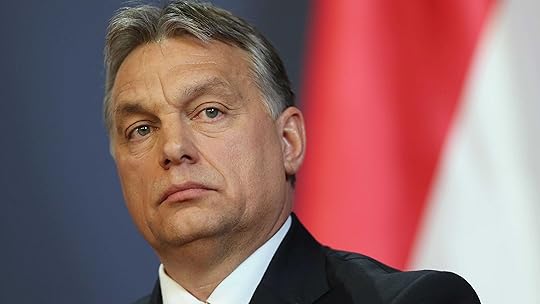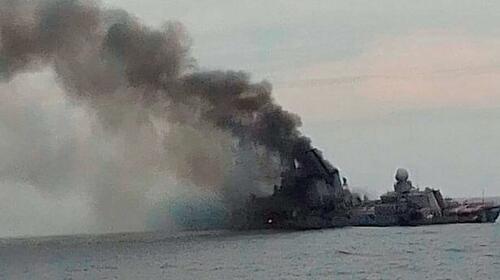Steve Bull's Blog, page 231
May 9, 2022
Digging In: Why powering a green future means more mines
 Digging In: Why powering a green future means more mines“It’s absolutely ironic. But to save the planet, we are going to need more mines.” Government geoscientist
Digging In: Why powering a green future means more mines“It’s absolutely ironic. But to save the planet, we are going to need more mines.” Government geoscientistAround Australia new mining operations are being established and old sites, shuttered decades ago, are being brought back to life. These miners aren’t digging for coal or gold, they’re hunting for other lucrative commodities – known as critical minerals.
“Critical minerals (are) everything you use for electric vehicles, for transport, for manufacturing. We’re really at the start of what could be a new mining boom.” Minerals lobbyist
If you own a mobile phone, if you power your home with renewable energy or drive an electric vehicle, then these minerals are already playing a key part in your life.
And they will play a vital role in all our futures.
But there is a hidden cost?
“We have to decide as a country. How valuable is a place and is it worth risking for mining?” Research scientist
On Monday Four Corners investigates the new critical minerals mining boom and finds Australia is in the box seat to exploit a surge in worldwide demand.
“Australia is still the luckiest country. Last century we were the luckiest because we had all the coal and a huge amount of natural gas… what we know the future needs is things that Australia also has in spades.” US energy policy adviser
From lithium mines in WA and the NT, to cobalt operations in NSW and tin mining in Tasmania, these critical minerals are not just making major profits, they’re playing a part in the super power rivalry between America and China.
“China has always known the value of critical minerals. We are moving into a period now of geopolitical competition, everybody is looking for leverage. The Chinese are quite explicit about that.” China analyst
…click on the above link to read the rest of the article…
May 7, 2022
An Economic ‘Atomic Bomb’: Hungary Threatens EU’s Latest Sanctions Against Russia, Including Oil Embargo

Hungarian Prime Minister Viktor Orban said current energy sanctions proposals against Russia are not … [+]
GETTY IMAGES
KEY FACTS
Orban, an ally to Putin who was reelected for a fourth term as prime minister in April, told Hungarian state radio on Friday that Hungary could not support proposed EU sanctions against Russia in their current form, according to multiple news reports.
Plans to ban Russian oil are far too costly and would amount to an “atomic bomb” being dropped on the Hungarian economy, he said.
Hungary would need at least five years and massive investment on infrastructure in order to manage without Russian oil, Orban said.
He said he is willing to negotiate a sanctions proposal that meets Hungary’s interests and is waiting on a new proposal from the European Commission.
While Orban’s objections are not surprising—Hungary is heavily dependent on Russian oil and has consistently shot down proposed energy sanctions against Moscow since it invaded Ukraine in February—they are a major obstacle for finalizing the bloc’s latest round of sanctions, which require unanimity from all 27 member states.
KEY BACKGROUND
Current plans would see most of the EU phase out Russian oil imports within six months, alongside disconnecting some of Russia’s largest banks from the SWIFT international finance system and banning Russian broadcasters from the region. When outlining the sanctions package on Wednesday, European Commission President Ursula Von der Leyen said ending the bloc’s “dependency on Russian oil…
…click on the above link to read the rest of the article…
[image error]
May 6, 2022
Buckle Up for a Crashing Economy and More Inflation

Jerome Powell began hinting that inflation might be a problem last August. In November, Powell retired the word “transitory.” But here we are in May and the Federal Reserve still hasn’t done anything substantive to address the inflation problem.
And now it may be too late. It’s probably time to buckle up for more inflation – and perhaps a crashing economy.
Powell and Company have been talking tough for months, but there hasn’t been a whole lot of action. In March, the central bank raised interest rates a paltry 25 basis points. At the May meeting, the FOMC followed up with a more aggressive 1/2% rate hike but took a 75 basis point rate hike off the table.
Meanwhile, the Fed didn’t even start tapering quantitative easing until January. In mid-April, the balance sheet was still expanding, hitting an all-time high of $8.97 trillion.
At the May FOMC meeting, the Fed unveiled its balance sheet reduction scheme. It was hardly impressive. If the Fed shrinks its balance sheet at the proposed rate, it will be back to pre-pandemic levels in about eight years.
The Fed has targeted a 2.5% interest rate by the end of the year. With GDP already going negative in Q1, it’s questionable that the Fed can get there without completely tanking the economy. There are already signs that the Fed has pricked the housing bubble.
And as Mises Institute senior editor Ryan McMaken pointed out in a recent article, the Fed really needs to push rates much higher than 3%.
One percent may seem high to some market observers of recent rate cycles, but we’re now in a high-inflation environment with price inflation above 8 percent. The Fed is going to have to do more than a mild hike here and there to make a dent in 8 percent CPI (Consumer Price Index) inflation…
…click on the above link to read the rest of the article…
Will the world ever reach peak crude production of November 2018 again? (part 1)
According to EIA data global crude & condensate production peaked in November 2018 at 84.5 mb/d. The peak was short-lived: 2 months above 83 mb/d plus 3 months above 84 mb/d while the average for the remaining months was 82.2 mb/d.
 Fig 1: Graph showing additional unconventional and Iraqi crude production after 2008
Fig 1: Graph showing additional unconventional and Iraqi crude production after 2008
US shale oil (incremental from 2011), Canadian tar sands (incremental from 2011) and Iraq’s oil (incremental from 2008) contributed to an increase in production above the Dec 2005 peak of 74.2 mb/d. The 2005 peak caused the 2008 oil price shock (Chinese demand for the Olympic games also played a role) and the 2009 financial crisis. The response in the US was quantitative easing QE1-QE3, copied and repeated by many countries, creating a gigantic asset bubble.
 Fig 2: Current oil price path compared to 2007/08
Fig 2: Current oil price path compared to 2007/08
Oil prices went up already before the war in Ukraine which is changing the whole world, including oil supply and demand. Lockdowns from Covid, as now again experienced in China, complicate matters.
https://oilprice.com/Energy/Energy-General/Demand-Destruction-Is-Delaying-An-Oil-Supply-Crisis.html
 Fig 3: Crude oil production from the 3 big producers
Fig 3: Crude oil production from the 3 big producers
Russia had been a steady producer over the last 15 years, slowly inching up production by 2 mb/d since 2005 but recently flattening out below 11 mb/d. A Rystad study predicted a peak in 2020. More details are in this previous post:
28 Feb 2022 Russian oil production update Nov 2021
https://crudeoilpeak.info/russian-oil-production-update-nov-2021
The Baker Institute for public policy did this analysis:
REROUTE, REDUCE, OR REPLACE?
HOW THE OIL MARKET MIGHT COPE WITH A LOSS OF RUSSIAN EXPORTS AFTER THE
INVASION OF UKRAINE
Mar 2022
https://www.bakerinstitute.org/media/files/files/3bf292f2/ces-pub-russian-oil-040822.pdf
Let’s have a look at the crude oil production changes in the last 5 years:
 Fig 4: Countries with the largest changes are stacked on top
Fig 4: Countries with the largest changes are stacked on top
…click on the above link to read the rest of the article…
Will You Starve to Death This Year?
Russia’s Oil Output Is Plummeting, And It May Never Recover
Russian oil production is falling. In March, it shed half a million bpd, which by the end of April reached a full 1 million bpd, according to BP’s CEO, Bernard Looney. And this may well grow to 2 million bpd this month. These barrels may not be returning to the market any time soon. As the European Union targeted a barrage of sanctions on Moscow, oil was excluded as a direct target but financial and maritime sanctions affected the industry. Now, the EU is proposing a full oil embargo, save for a handful of member states too dependent on Russian oil to comply, and this will mean a further loss of barrels at a time when the global oil market is already stretched thin.
“We could potentially see the loss of more than 7 million barrels per day (bpd) of Russian oil and other liquids exports, resulting from current and future sanctions or other voluntary actions,” the secretary-general of OPEC, Mohammed Barkindo, told the European Union last month.
This does not appear to have made any lasting impression on the decision-makers in Brussels, who are moving full steam ahead with the oil embargo. Meanwhile, alternative suppliers would struggle to fill the void left by Russian oil.
…click on the above link to read the rest of the article…
The Great Crash of 2022 – What happens next? Go read the Book!
“That which does not kill us, makes us stronger….”
This Morning – Yesterday’s market meltdown was heralded as a “capitulation trade”, but who knows? What we do know is there an awful lot to worry about, and the conditions for the BIG ONE have been building for decades. Time to re-read The Great Crash, 1929.
There is nothing like a 6.30 am swim against the tide on cold, grey morning in muddy near-freezing water to remind you of why we spend so much money on mattresses and warm snuggly duvets. Of course, a swim should have been a wonderful moment to contemplate what the papers are calling the “Capitulation Trade” – as stocks posted their worst day in a couple of years and bonds tumbled…. But… Keeping up my momentum against the building down-tide was my primary concern.
Does that mean I missed the opportunity to liquidate my entire account before the end of everything – which might be later this afternoon? Oh dear…
On Wednesday, the market welcomed Jay Powell’s 50 bp hike with a relief rally. Yesterday it puked and reversed all its recent gains. What changed? Who knows, but was yesterday really the beginning of the big and negative something we’ve all been waiting for?
Maybe, maybe not. Who knows? Who can tell? If I knew I wouldn’t be swimming in dirty cold rivers to stay fit, nor would I be writing about it each morning!
…click on the above link to read the rest of the article…
US Intel Assisted In Sinking Russian Flagship Vessel: Officials Claim Bombshell Escalation
Less than 24 hours after The New York Times issued a provocative report citing unnamed US officials who are celebrating that American intelligence-sharing with Ukraine’s military has helped take out multiple Russian generals since the Feb.24 invasion, NBC News is out with yet another bombshell claim sourced to the deep state US intel officials.
Amid what seems escalation after escalation, and new revelations of Washington’s deepening and perhaps increasingly direct role in fighting Russia in Ukraine, NBC brings us this doozy… “Intelligence shared by the U.S. helped Ukraine sink the Russian cruiser Moskva, U.S. officials told NBC News, confirming an American role in perhaps the most embarrassing blow to Vladimir Putin’s troubled invasion of Ukraine.”
 Image later leaked of the April 15 sinking of the Moskva
Image later leaked of the April 15 sinking of the MoskvaAs a reminder of just how hugely significant the claim is – and just how dangerous in terms of representing a massive escalation – the Moskva was considered the flagship of Russia’s Black Sea Fleet, had 510 crewmen on board before Neptune anti-cruise ship missiles scored a direct hit in mid-April, and was the most embarrassing single blow to President Putin’s war effort of the whole conflict thus far.’
“The attack happened after Ukrainian forces asked the Americans about a ship sailing in the Black Sea south of Odesa, U.S. officials told NBC News,” the report continues. “The U.S. identified it as the Moskva, officials said, and helped confirm its location, after which the Ukrainians targeted the ship.” This comes after the NY Times revealed in a report the night prior that much of the intel-sharing is focused on Russian troop and equipment movements.
According to further details based on anonymous US senior officials:
…click on the above link to read the rest of the article…
May 5, 2022
Homeland Security’s “Disinformation Board” is Even More Pernicious Than it Seems
The power to decree what is “disinformation” now determines what can and cannot be discussed on the internet. It is now in the hands of trained disinformation agents of the U.S. Security State.
 Official government portrait of Nina Jankowicz, appointed to serve as Executive Director of the new “Disinformation Board” to be housed within the U.S. Department of Homeland Security (posted by Jankowicz to Twitter)
Official government portrait of Nina Jankowicz, appointed to serve as Executive Director of the new “Disinformation Board” to be housed within the U.S. Department of Homeland Security (posted by Jankowicz to Twitter)The most egregious and blatant official U.S. disinformation campaign in years took place three weeks before the 2020 presidential election. That was when dozens of former intelligence officials purported, in an open letter, to believe that authentic emails regarding Joe Biden’s activities in China and Ukraine, reported by The New York Post, were “Russian disinformation.” That quasi-official proclamation enabled liberal corporate media outlets to uncritically mock and then ignore those emails as Kremlin-created fakes, and it pressured Big Tech platforms such as Facebook and Twitter to censor the reporting at exactly the time Americans were preparing to decide who would be the next U.S. president.
The letter from these former intelligence officials was orchestrated by trained career liars — disinformation agents — such as former CIA Director John Brennan and former Director of National Intelligence James Clapper. Yet that letter was nonetheless crucial to discredit and ultimately suppress the New York Post‘s incriminating reporting on Biden. It provided a quasi-official imprimatur — something that could be depicted as an authoritative decree — that these authentic emails were, in fact, fraudulent.
After all, if all of these noble and heroic intelligence operatives who spent their lives studying Russian disinformation were insisting that the Biden emails had all of the “hallmarks” of Kremlin treachery, who possessed the credibility to dispute their expert assessment?…
…click on the above link to read the rest of the article…



